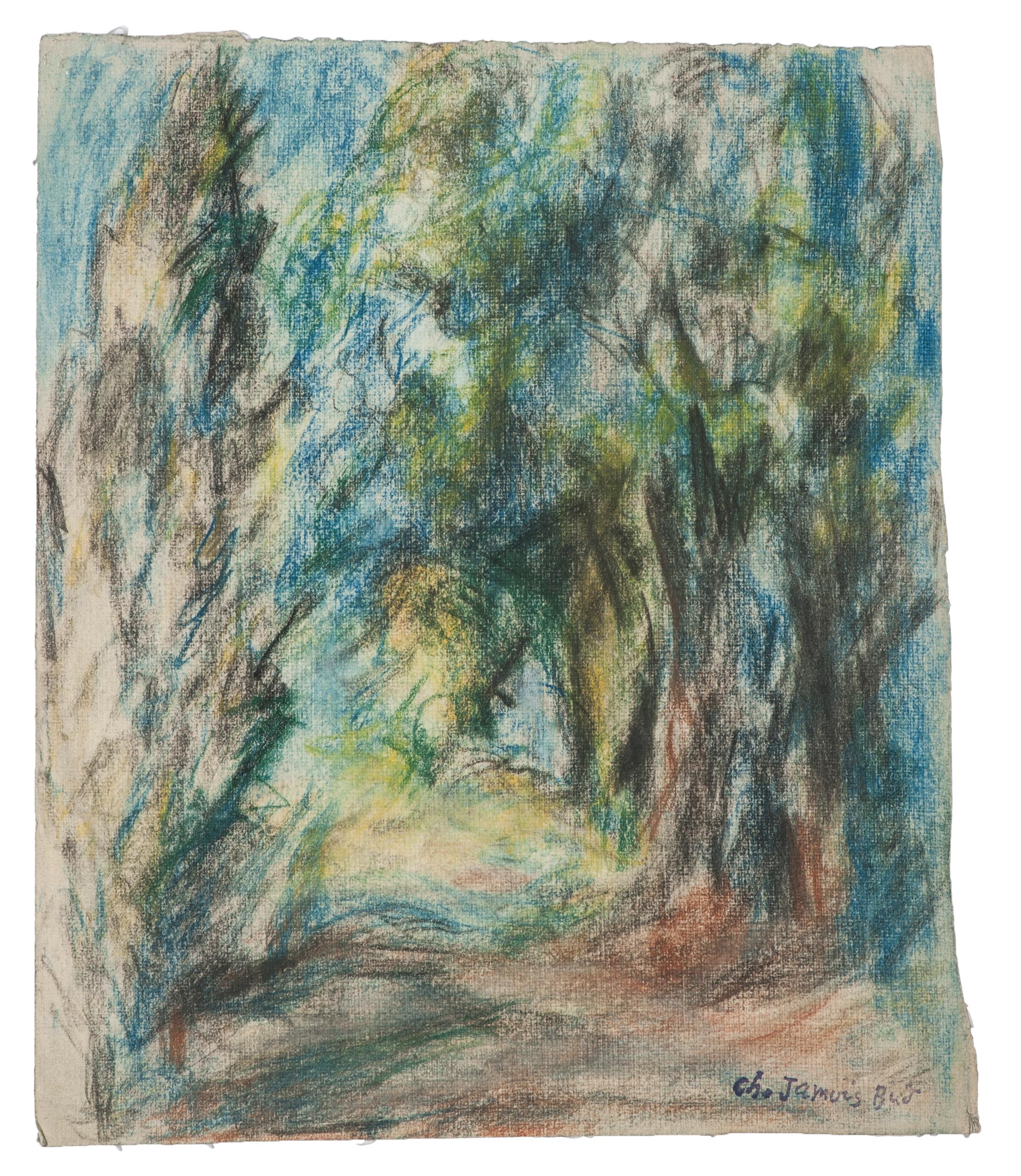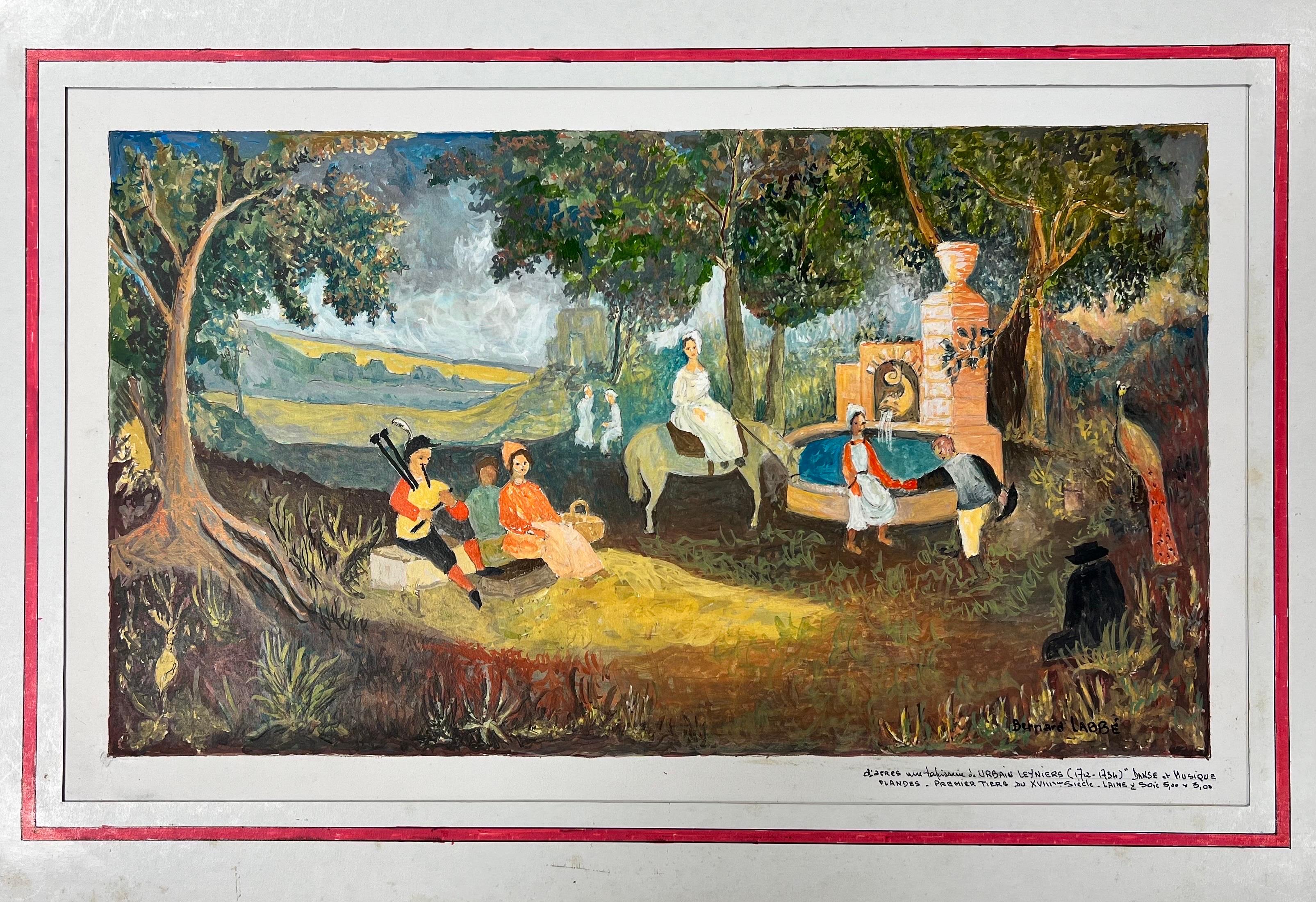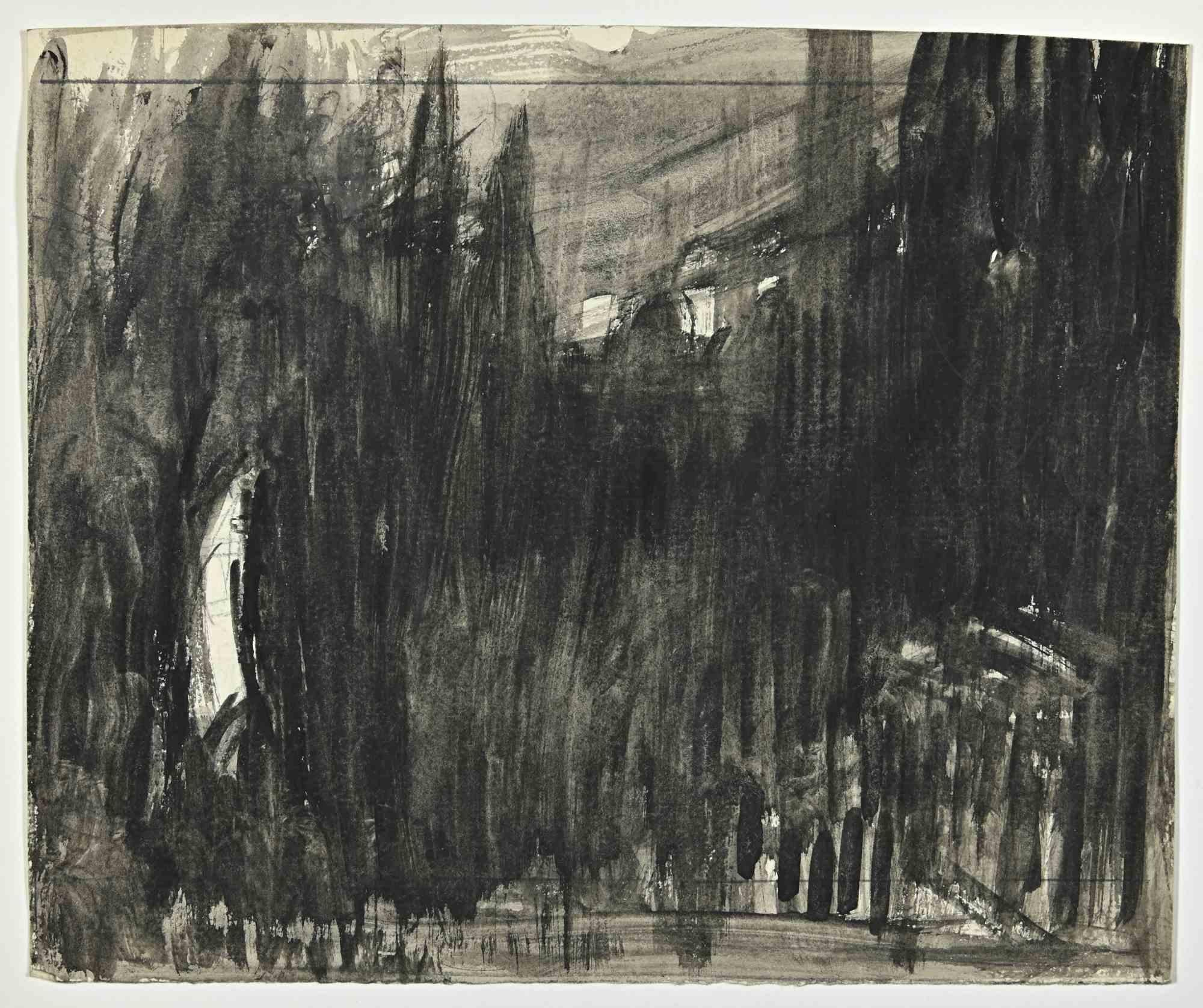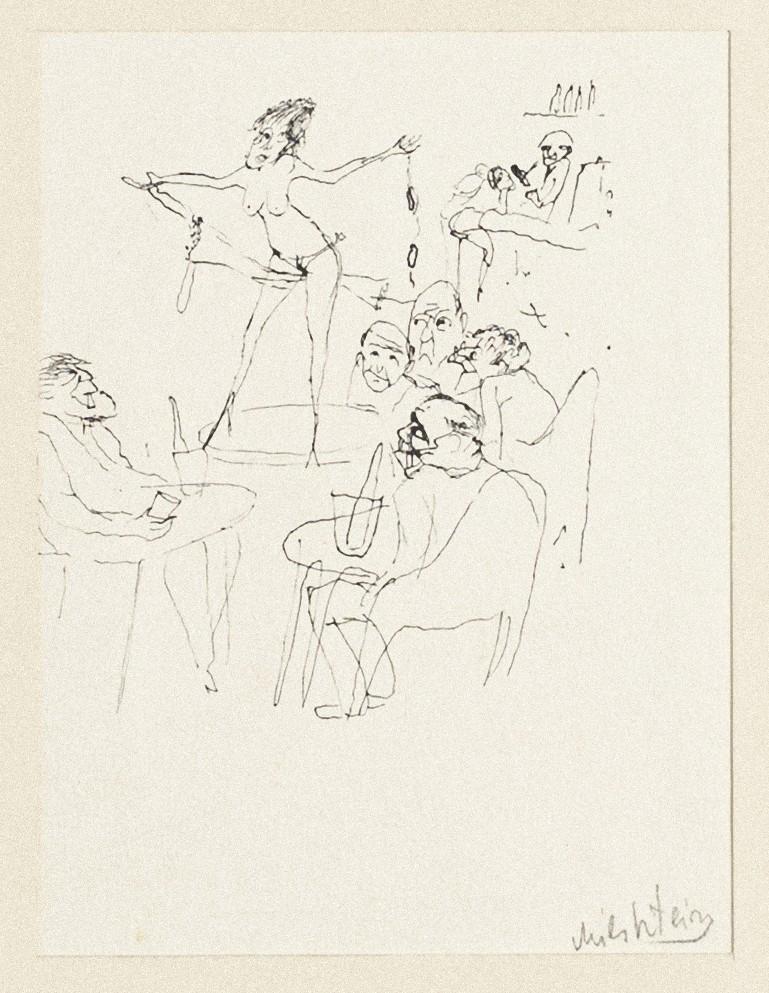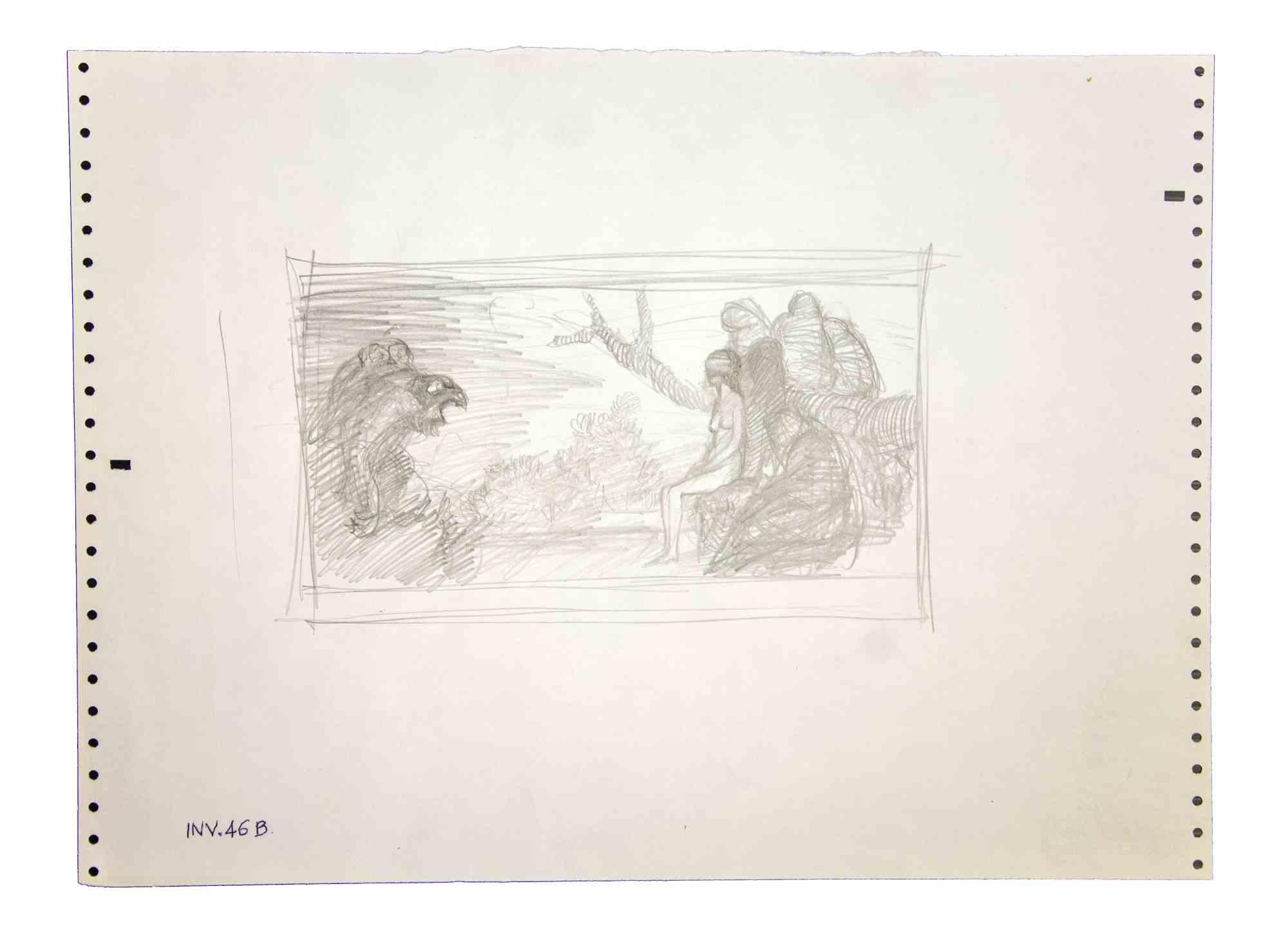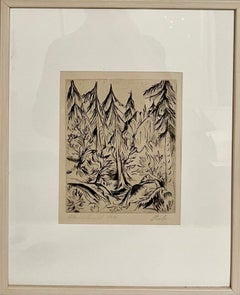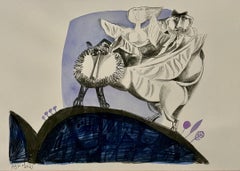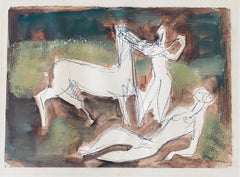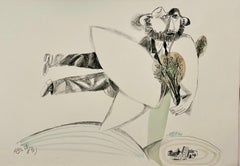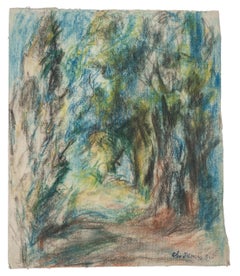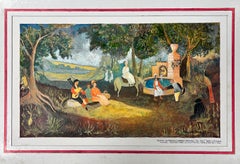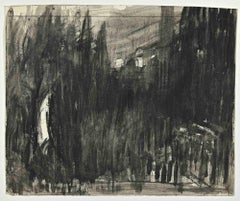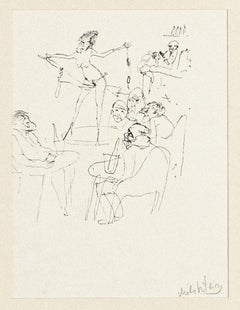Items Similar to Figures in the Forest, Rare Drawing, Israeli Modernist master
Want more images or videos?
Request additional images or videos from the seller
1 of 6
Itzhak DanzigerFigures in the Forest, Rare Drawing, Israeli Modernist master
$3,600
£2,758.51
€3,172.93
CA$5,146.69
A$5,590.24
CHF 2,959.57
MX$67,498.70
NOK 36,947.17
SEK 35,001.57
DKK 23,692.01
About the Item
Yitzhak Danziger
Genre: Expressionist
Subject: People
Medium: Ink
Surface: Paper
Dimensions w/Frame: 17" x 17"
Yitzhak Danziger (Hebrew: יצחק דנציגר; 26 June 1916 – 11 July 1977) was an Israeli sculptor. He was one of the pioneer sculptors of the Canaanite Movement, and later joined the "Ofakim Hadashim" (New Horizons) group.
orn in Berlin in 1916, Izhak Danziger moved to Palestine in 1923. From 1934-1937 Danziger studied at the Slade School of Fine Art, London. During the 1940s he worked in Paris with Zadkine and Brancusi. In the 1950s he exhibited in London at the Institute of Contemporary Art. He is considered to be one of Israel's most important sculptors. His work, which consists largely of environmental pieces, has been exhibited at the Hisrshhorn Museum and Sculpture Garden in Washington D.C. In 1969 Danziger was awarded the Sandberg Prize by the Israel museum. He died in 1977.
When discussing Chariot II, Mordechai Omer compares it to a work of similar subject by Alberto Giacometti. He explains that Danziger, unlike Giacometti, removes the figure, leaving only the chariot itself. Omer eloquently explains that "The vehicle designed to serve the needs of the person inside is devoid of this human presence, with only the memories of its headlong downhill journeys leaving their mark in the parts of a half-ruined, half-standing chariot, allowing wide scope for the viewer's imagination. If Giacometti's chariots reminded him of hospital pharmacy wagons, Danziger's gleaming brass chariots, with their clean geometric shapes, are more reminiscent of the equipages of battle or triumphal processions, whose journeys left their secrets in the implements built by men to help them cover the distances they wished to travel." (Itzhak Danziger, exhibition catalogue, Tel Aviv Museum of Art, Tel Aviv and The Open Museum, Indusrial Park, Tefen, 1996, p. 248)
Danziger's chariot sculptures were given as prizes for the Israel Museum Book awards.
Danziger was born in Berlin in 1916 to a Zionist family. His father was a surgeon and served in the German Army during World War I.
The family immigrated to then Mandate Palestine in 1923 and settled in Jerusalem. Danziger studied art at the Slade School of Fine Art 1934–37. He was influenced by his visits to the British Museum, the Anthropological Museum and the art from Ancient Egypt, Assyria, Babylon, Persia, India and Oceania and Africa. These would later on play an important role in his sculptures.
- Creator:Itzhak Danziger (1916-1977, Israeli)
- Dimensions:Height: 17 in (43.18 cm)Width: 17 in (43.18 cm)
- Medium:
- Movement & Style:
- Period:
- Condition:
- Gallery Location:Surfside, FL
- Reference Number:1stDibs: LU38211680662
About the Seller
4.9
Platinum Seller
Premium sellers with a 4.7+ rating and 24-hour response times
Established in 1995
1stDibs seller since 2014
1,815 sales on 1stDibs
Typical response time: 1 hour
- ShippingRetrieving quote...Shipping from: Surfside, FL
- Return Policy
Authenticity Guarantee
In the unlikely event there’s an issue with an item’s authenticity, contact us within 1 year for a full refund. DetailsMoney-Back Guarantee
If your item is not as described, is damaged in transit, or does not arrive, contact us within 7 days for a full refund. Details24-Hour Cancellation
You have a 24-hour grace period in which to reconsider your purchase, with no questions asked.Vetted Professional Sellers
Our world-class sellers must adhere to strict standards for service and quality, maintaining the integrity of our listings.Price-Match Guarantee
If you find that a seller listed the same item for a lower price elsewhere, we’ll match it.Trusted Global Delivery
Our best-in-class carrier network provides specialized shipping options worldwide, including custom delivery.More From This Seller
View All1920 German Expressionist Figurative Lithograph "The Forest" Paul Kleinschmidt
By Paul Kleinschmidt
Located in Surfside, FL
Paul Kleinschmidt, (1883–1949)
"The Forest"
Lithograph on Cream Paper
1920
Frame: 21" X 17"
Image: 10.75" X 8.5"
An expressionist forest scene with pine trees
Provenance: bears label...
Category
1920s Abstract Figurative Prints
Materials
Lithograph, Paper
Rare Israeli Modernist Judaica Watercolor Painting on Lithograph Naftali Bezem
By Naftali Bezem
Located in Surfside, FL
Naftali Bezem (Hebrew: נפתלי בזם; born November 27, 1924) is an Israeli painter, muralist, and sculptor.
Bezem was born in Essen, Germany, in 1924. His early adolescence was spent ...
Category
20th Century Modern Figurative Drawings and Watercolors
Materials
Watercolor, Lithograph
Abstract Composition with Figures Israeli Mid Century Modernist
By Stefan Alexander
Located in Surfside, FL
Stefan Alexander, born Czechoslovakia. In World War II sent to forced labour camps. 1945-49 Member of Czech Academy of Arts. 1952 Settled in Safed and participated in permanent exhib...
Category
Mid-20th Century Abstract Paintings
Materials
Gouache, Pen
Rare Israeli Modernist Judaica Watercolor Painting on Lithograph Naftali Bezem
By Naftali Bezem
Located in Surfside, FL
Naftali Bezem (Hebrew: נפתלי בזם; born November 27, 1924) is an Israeli painter, muralist, and sculptor.
Bezem was born in Essen, Germany, in 1924. His early adolescence was spent ...
Category
20th Century Modern Figurative Drawings and Watercolors
Materials
Watercolor, Lithograph
Rare Israeli Modernist Judaica Watercolor Painting on Lithograph Naftali Bezem
By Naftali Bezem
Located in Surfside, FL
Naftali Bezem (Hebrew: נפתלי בזם; born November 27, 1924) is an Israeli painter, muralist, and sculptor.
Bezem was born in Essen, Germany, in 1924. His early adolescence was spent ...
Category
20th Century Modern Figurative Drawings and Watercolors
Materials
Watercolor, Lithograph
Rare Israeli Modernist Judaica Watercolor Painting on Lithograph Naftali Bezem
By Naftali Bezem
Located in Surfside, FL
Naftali Bezem (Hebrew: נפתלי בזם; born November 27, 1924) is an Israeli painter, muralist, and sculptor.
Bezem was born in Essen, Germany, in 1924. His early adolescence was spent ...
Category
20th Century Modern Figurative Drawings and Watercolors
Materials
Watercolor, Lithograph
You May Also Like
The Forest- Original Drawing by Ch. Jamiris Rodriguez - Mid-20th Century
Located in Roma, IT
The Forest is an original drawing in pencil and oil pastel realized by Ch. Jamiris Rodriguez.
This Artwork is depicted through strong and confident strokes in a well-balanced compos...
Category
Mid-20th Century Modern Figurative Drawings and Watercolors
Materials
Paper, Oil Pastel, Pencil
1950's Modernist/ Cubist Painting - Busy Figures In Forest
By Bernard Labbe
Located in Cirencester, Gloucestershire
French Landscape
by Bernard Labbe (French mid 20th century)
original gouache on paper stuck on card
size: 18 x 25 inches
condition: very good and ready t...
Category
Mid-20th Century Modern Figurative Paintings
Materials
Gouache
$488 Sale Price
20% Off
Forest - Drawing by Gabriele Galantara - Mid-20th Century
By Gabriele Galantara
Located in Roma, IT
Forest is a modern artwork by Gabriele Galantara (1865-1937) in the early 20th century.
The artwork has been realized in Ink, Charcoal and Watercolor on paper.
Good conditions and ...
Category
Mid-20th Century Modern Figurative Drawings and Watercolors
Materials
Ink, Watercolor, Charcoal
Figures - Original Drawing by Zwy Milshtein - Late 20th Century
Located in Roma, IT
Figures is an original China drawing realized by French artist Zwy Milshtein (1934-2020).
Hand-signed on the lower right.
Good conditions.
Included a Passepartout; 35 x 29 cm.
Th...
Category
Late 20th Century Contemporary Figurative Drawings and Watercolors
Materials
Ink
Sybil in the Forest - Drawing by Leo Guida - 1970s
By Leo Guida
Located in Roma, IT
Sybil in the Forest is an original drawing in pencil on paper realized by Leo Guida in the 1970s.
Good condition.
Leo Guida (1992 - 2017). Sensitive to current issues, artistic mo...
Category
1970s Contemporary Figurative Drawings and Watercolors
Materials
Pencil
Sybil in the Forest - Drawing by Leo Guida - 1970s
By Leo Guida
Located in Roma, IT
Sybil in the Forest is an original drawing in pencil on paper realized by Leo Guida in the 1970s.
Good condition.
Leo Guida (1992 - 2017). Sensitive to current issues, artistic mo...
Category
1970s Contemporary Figurative Drawings and Watercolors
Materials
Pencil
More Ways To Browse
Modern Masters Art
Mid Century Modern Brass Figures
Israeli Modern Paintings
Ancient Egyptian Art
Ancient Babylon
Giacometti Figure
Orientalist Drawing
Paris Ink Drawings
Pencil 18th
1919 Charcoal
1970s Pen Drawings
Vintage Car Drawing
Original Charcoal Drawings Framed
20th Century Charcoal Sketch
Richard Knotel
Andre Roland Brudieux
Herbert Knotel
Shoe Drawing
